This post may contain affiliate links. If you make a purchase through a link, I may receive a small commission, at no cost to you. These commissions help keep this website up and running, and I thank you for your support. Read my full disclosure here.
After basing ourselves in Ghent for 3 nights and exploring the gorgeous cities of Bruges, Ghent and Antwerp, we moved on to visit and stay in Brussels, the capital of Belgium and the administrative capital of the European Union (EU). As we had very early flights the following day, we wanted to be closer to the airport too.
It was a rather frosty morning in Ghent, and we ended up having to link arms and skate our way to the train station. The brave souls who were attempting to cycle were sent sprawling across the pavement as their bikes flew out from under them. The sensible ones gave up and just walked them gingerly across the ice. It had been a very cold winter whilst we were in Belgium, and they did not seem as prepared for it as they usually are in other European cities. There were no grit trucks or buckets in sight.
The train from Ghent to Brussels took just over half an hour. Once we arrived, we dropped off our bags at our hotel and then headed out to explore. As we hadn’t had breakfast yet, we headed straight for Aux Merveilleux de Fred (Rue du Marche aux Herbes 7, 1000), an amazing little patisserie that specialises in sweet buns that have either chocolate chips or raisins, and these amazing meringues that they smother in different flavoured buttercream. The staff actually prepare everything in front of the large shop front window, and it was a real joy watching them at work and imagining how much they must produce and sell each day. I was dying to scoop up some buttercream out of their huge mixing bowls and shove it in my mouth (I looove buttercream). This place is really popular. As we were there quite early, there was not much of a line, but it got very busy when we walked past it later in the day. We bought the chocolate chip buns, and although they don’t look particularly exciting, they tasted amazing. We also purchased the meringues, and I couldn’t believe how they just melted in my mouth! They disappeared in seconds. They were absolutely gorgeous.
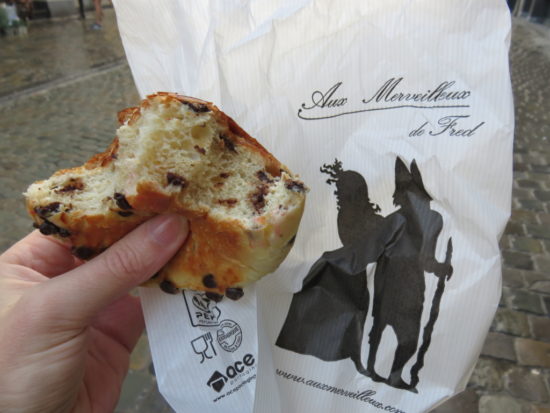
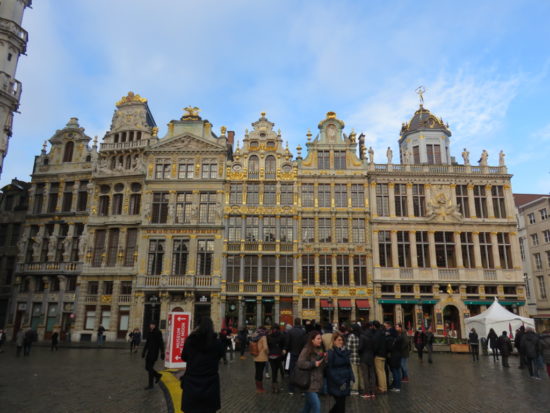
Nearby is the jewel of Brussels, the Grand Place, which is a UNESCO World Heritage site. The square is surrounded by magnificent 14th-century buildings. Here we found the city’s Town Hall, a Gothic building from the Middle Ages; grand Guildhalls; the Museum of the City of Brussels; and the statue of Everardt Serclaes, whose arm brings luck to those who touch it. We spent quite a bit of time in the square just wandering around the buildings, taking in the grandeur and noting all the features and details on each of the buildings.
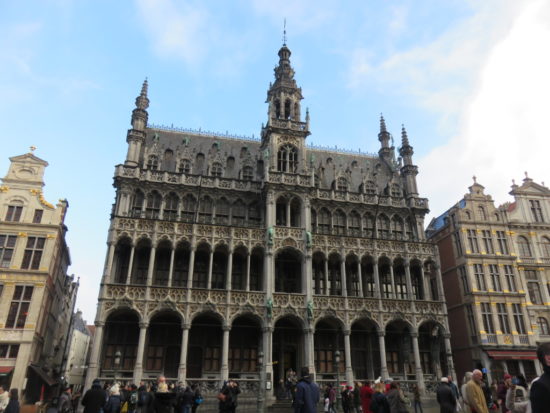
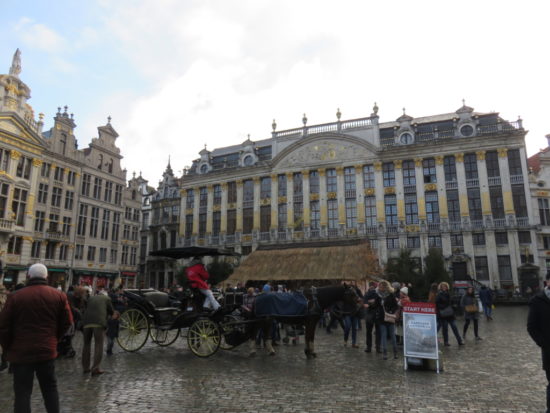
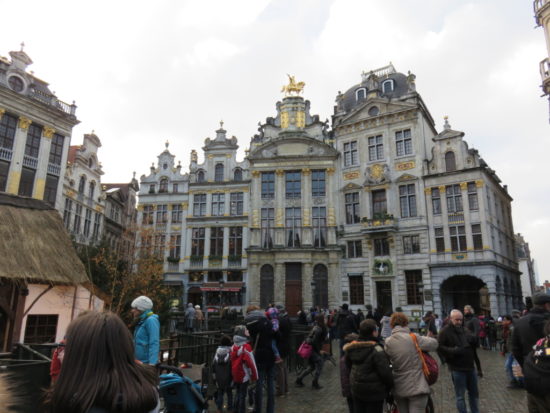
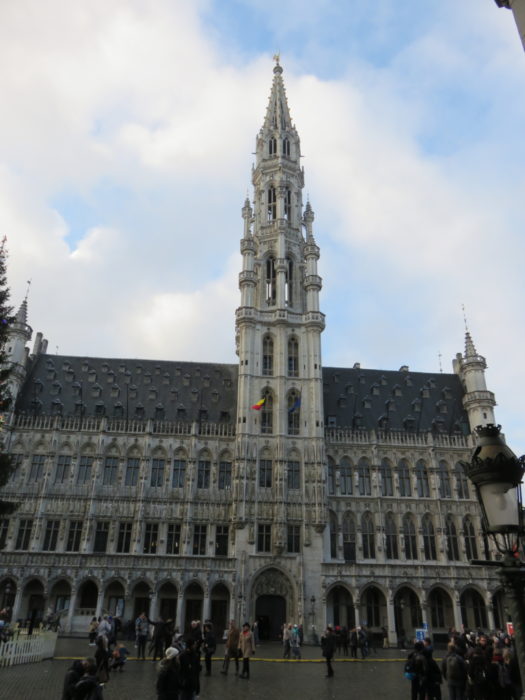
Eventually, we moved onto Mont des Arts for views of the city and to admire the large formal garden. Despite it being winter, the garden still provided some lovely green space. Nearby is the 18th century Palace of Charles of Lorraine. Charles was the governor of the Austrian Netherlands from 1744 to 1780 and an avid art and science enthusiast. The palace was actually closed for renovation when we visited, but it is due to open again as a museum in 2019.
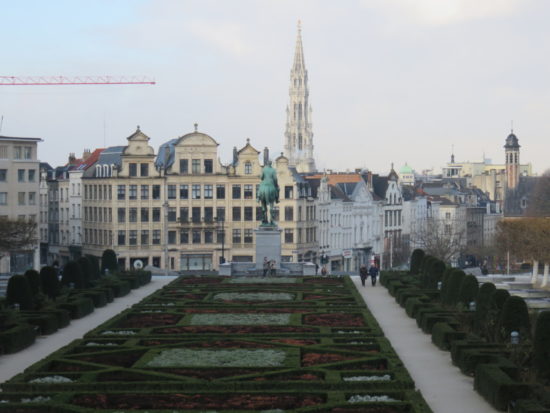
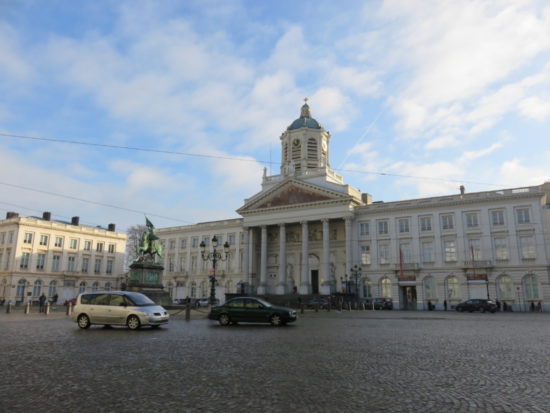
As we continued our walk, we arrived at the Royal Square, where the church Eglise Saint Jacques Sur Coudenberg (free to enter) is the centrepiece. This area is also known for its many museums, such as the Magritte art Museum, Royal Museums of Fine Arts of Belgium, Musical Instruments Museum, and the fine arts museum Fin-de-Siècle Museum. You can easily spend several days in Brussels just visiting museums.
We decided to head down Rue de la Régence, where we saw Église Notre-Dame au Sablon, a 15th century Catholic church known for its baroque chapels and Gothic architecture, and across from it a small sculpture park, Square du Petit Sablon. This neo-Renaissance style garden features sculptures by popular Belgian artists of the nineteenth century. The centrepiece above the fountain is of the Counts of Egmont and Hoorn, and behind them is the Egmont Palace (which now houses government offices and conferences).
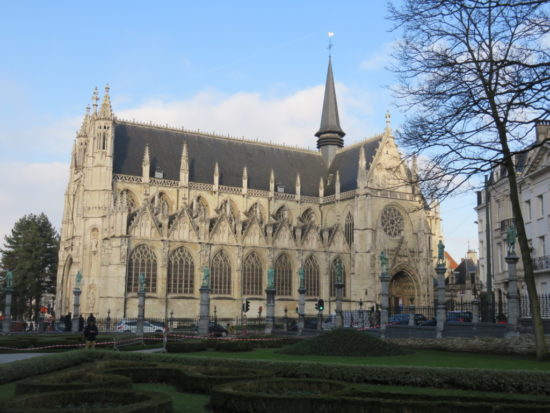
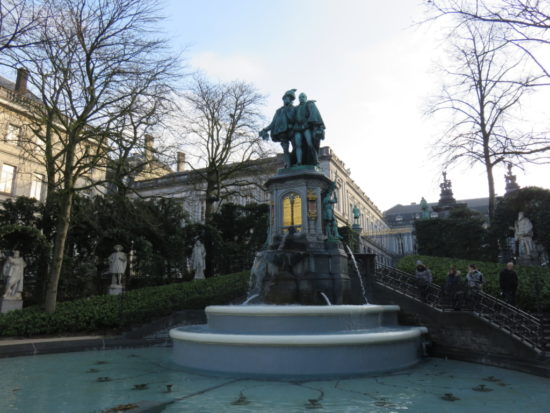
We continued down the road until we got to the magnificent Law Courts of Brussels, a very imposing building. Unfortunately, whilst we were visiting, it was under renovation, so surrounded by scaffolding. This area is built up on a hill, so you can actually get good views of Brussels from here. I was surprised to see just how large and sprawling the city was.
We headed back to the Royal Square and along Place des Palais to see the Royal Palace of Brussels, the official palace of the King and Queen of Belgium. However, apparently, they don’t actually live there. Instead, they live at their other house, the more secluded Royal Palace of Laeken, which is on the outskirts of Brussels and sits in a large park that’s off limits to the public! Unfortunately, we didn’t get the chance to visit the Royal Palace of Brussels as it is only open during the summer months. However, the Parc de Bruxelles in front of it is a lovely park to take a stroll and is surrounded by beautiful historic buildings. At the opposite end of the park from the palace is the Belgian Chamber of Representatives building, which is another lovely historic building to admire.
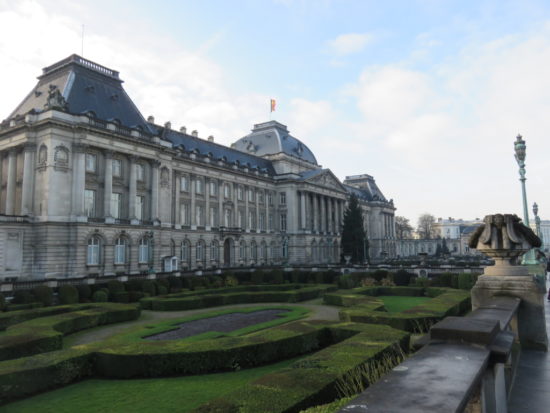
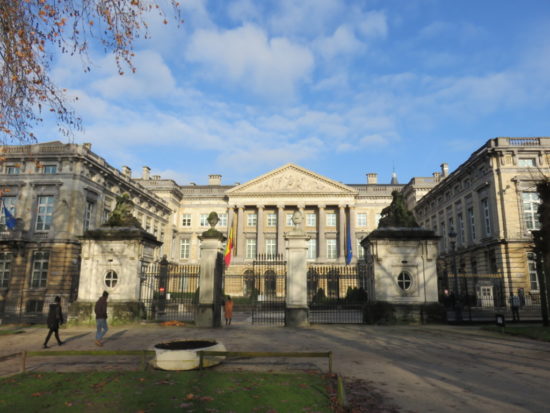
We decided to walk up to Parc du Cinquantenaire, which took about 30 minutes and led us through the European Quarter, where most of the European buildings are located. One of the more famous ones is the Berlaymont, which houses the EU headquarters and is in the shape of the EU emblem. Despite the massive office buildings, hotels and accommodation, it was eerily quiet, but I guess that was because it was Sunday and close to Christmas?
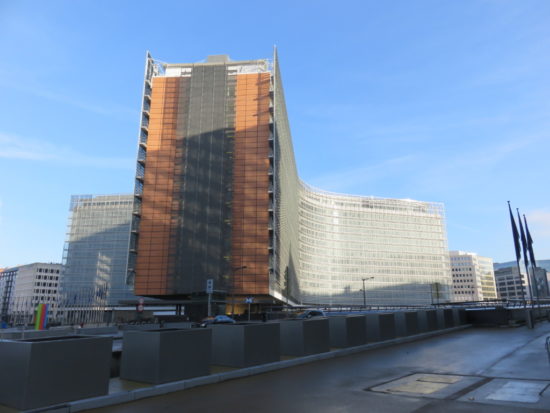
Parc du Cinquantenaire, however, was quite busy, as the winter sun was out, so families and dogs were enjoying the large green space. The highlight of the park was the impressive Triumphal Arch, which now houses the Cinquantenaire Museum, Autoworld, recommended for car lovers, and the Royal Museum of the Armed Forces and Military History. We decided to visit the latter. Neither of us is are huge military history buff, but we always try and visit a variety of museums to experience and learn new things. We both actually ended up enjoying the Royal Museum of the Armed Forces and Military History, because of its extensive collections, especially its aviation and armoured vehicles, as you get the opportunity to see them up close. If you visit in winter, make sure you don’t leave your coat in the lockers, as most of these exhibits are in large unheated warehouses. The aviation hall had a fascinating exhibition of the history of flight and showed the development of aeroplanes over time. The first aircraft were so flimsy and dangerous, those inventors must have been so brave to get in them or just plain crazy!

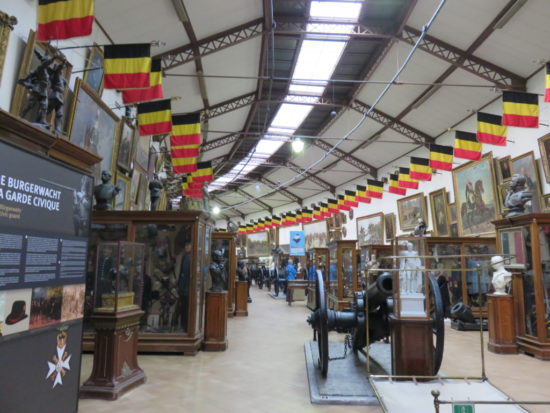
On leaving the museum, we decided to head back to the historic area that we had started in and ended up devouring some frites followed by some street waffles. There are actually two types of waffles sold in Belgium: the Belgian waffle is a yeast-leavened batter that is light and fluffy, and the Leige waffle is a thicker, more bread-like texture with delightful sugary lumps through it. I loved them both equally, honestly, I can’t choose a favourite.
As it was our last night in Belgium, we thought we had better stock up on some more chocolates to take home with us. It was really hard to choose where to go, as they all looked so delicious. But we ended up at Corné Port-Royal (Rue de la Madeleine 9, 1000 – there is also a store at Galerie de la Reine 5, Brussels 1000) which was reasonably priced compared to some of the other stores and they tasted delicious. As soon we entered we were offered free chocolates to try which of course immediately got us hooked! We ended up with a large box of truffles and a very large box of assorted dark chocolates. Although good quality Belgium chocolates aren’t cheap, I feel like they are good value because they are so rich compared to the usual chocolates you get from the supermarket, I don’t tend to eat nearly as much at once. Well, that’s my theory anyway, and I’m sticking to it!
We had yet to see one of the most popular sites of Brussels, the Manneken Pis (Rue de l’Etuve 31 / Lievevrouwbroersstraat 31), so we headed over to visit the little bronze statue of the peeing boy. He is regularly dressed up in different outfits, so when we visited, he was wearing a purple satin gown with a yellow waist tie. There is also a little girl peeing statue called Jeanneke Pis in Impasse de la Fidelite (narrow cul-de-sac in Rue des Bouchers) and a peeing dog, Zinneke Pis, found in Rue des Chartreux & Rue du Vieux-Marche. Personally, I can’t see the reason for the popularity of this statue, as it is constantly surrounded by a crowd of tourists. However, I did think the dog was kinda funny.

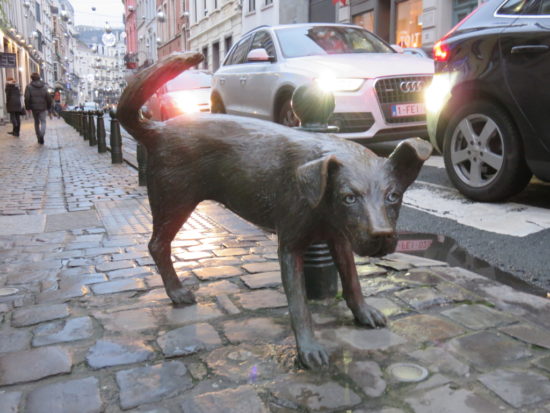
Brussels is a really fun city with a great sense of humour. It seemed that there were fun sculptures and comic strip murals at each turn. In fact, you can take yourself on a self-guided tour of the comic book route. If I’m ever lucky enough to return to Brussels, this will be at the top of my list.
It was getting late in the evening, and it had turned really cold. We found ourselves outside the beautiful La Bourse de Bruxelles, where there were some lovely Christmas markets. However, we needed to escape the cold, so we decided to warm up with some warm broth and dumplings at the nearby Asian restaurant Yi Chan (Rue Jules Van Praet 13, 1000).
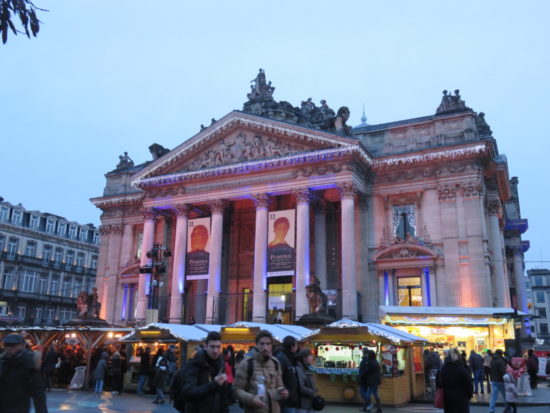
After that, we headed back to our hotel for an early night, as we had to get up at 3 am to catch the airport shuttle to Charleroi Airport. If you also plan to take this shuttle bus, be warned that despite having booked tickets in advance, it operates on a first come first served basis. So although we had arrived 20 minutes prior to departure, the bus was already full and they would not allow any standing passengers on board. The staff have a zero care factor, so you will have to just wait until the next bus, which thankfully for us ended up arriving and departing a bit earlier than scheduled as the airport was insanely busy (I met someone in line for security who lives between Brussels and the UK who advised me that this airport is usually quiet, but they seemed woefully unprepared the day we departed) and we only ended up just making it.
Practical Tips for Visiting Brussels
- How long should I visit for? I recommend spending a least a day in Brussels, but if you love visiting museums, then you could easily dedicate an entire additional day just for visiting more of the fantastic museums.
- Language: Historically, Brussels, but from the late 19th century, it shifted to French. People here speak both Dutch and French, although everyone we came across spoke perfect English as well. However, do try your hand at a few French words:
- Yes = Oui (wee)
- No = Non (no)
- Please = Sil vous plaît (Seal voo play)
- Thank you = Merci (Mare-see)
- Hello = Bonjour (Boh(n)-zhoor)
Or try using some Dutch:
- Dutch words:
- Yes = Ja (yah)
- No = Nee (nay)
- Please = Alstublieft (allst-oo-bleeft)
- Thank you = Dank je wel (dahnk yuh vel) (familiar – dank u vel is the formal form)
- Hello = Hallo (hah-low)
- Currency: Euro
- Tipping: Not required, but people usually round up.
- Electricity: The electrical current is 230 volts AC. Wall outlets generally take the European two round prong plugs. However, you are better off purchasing a worldwide adaptor that can be used in Belgium as well as other countries. At least then you can potentially get some further use out of it on future vacations. If you’re taking several electronics with you, then I would recommend purchasing a couple of these adaptors.
- Navigating: We used Google’s free Offline Maps. Google Offline Maps allows you to access free maps for navigating that can be used offline i.e. you don’t need WIFI, data, or roaming to be able to use them. Follow this detailed guide on how to use Google’s Offline Maps. Using your phone as a GPS will drain your battery quickly, so use a portable battery charger, which you can use to charge your phone and any other USB chargeable devices. If you prefer a paper map, then your accommodation will likely give you a free tourist map, or you could stop in at the tourist office and pick one up. Otherwise, you could purchase a Brussels city pocket map before you go. At least it’s reliable and won’t run out of battery or malfunction like the electronic options!

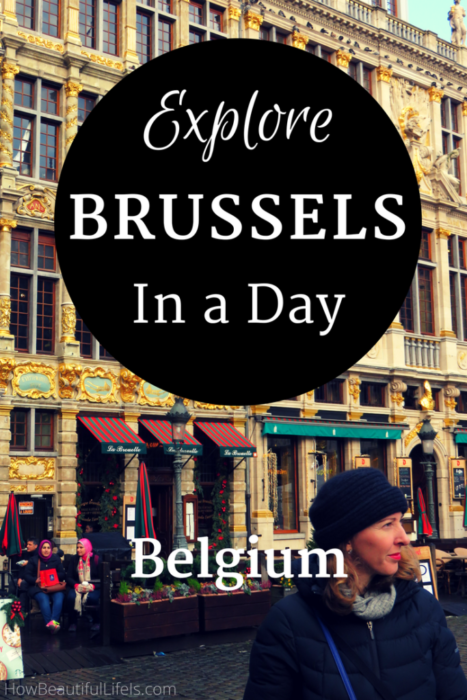
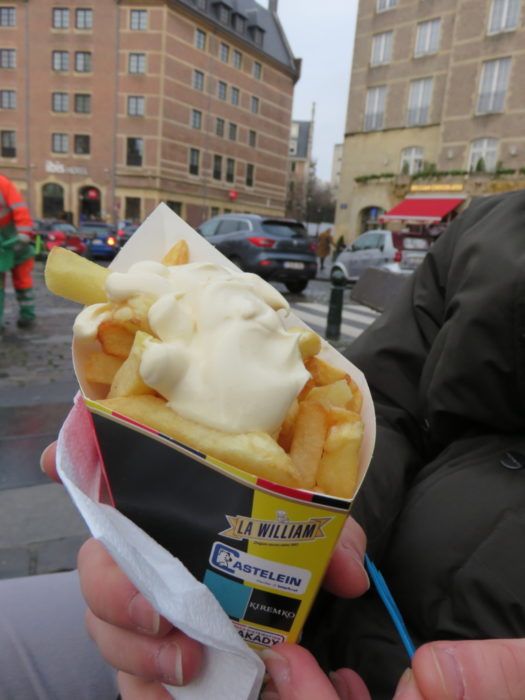

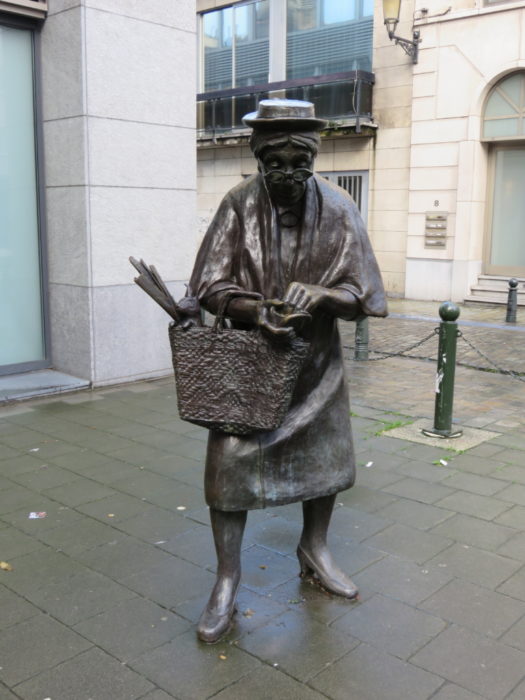
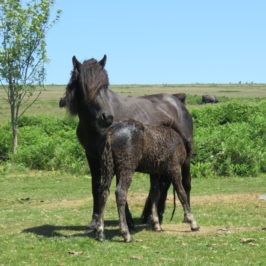
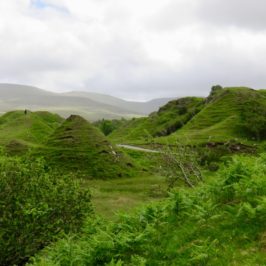
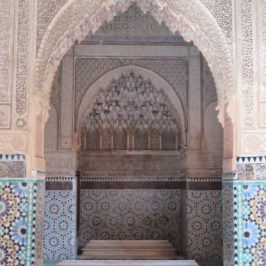
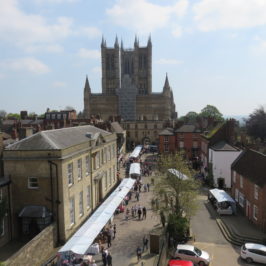
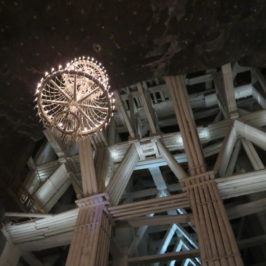
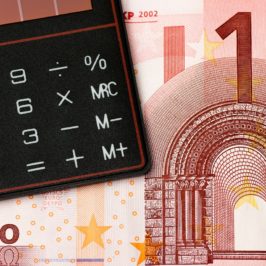
Leave a Reply